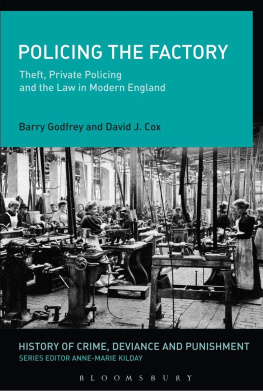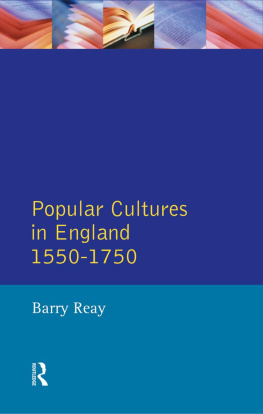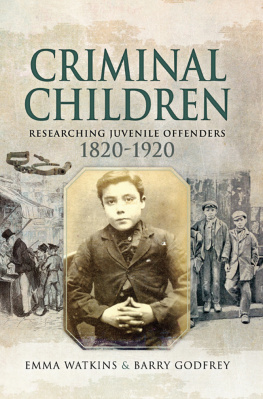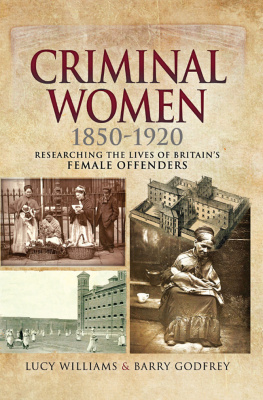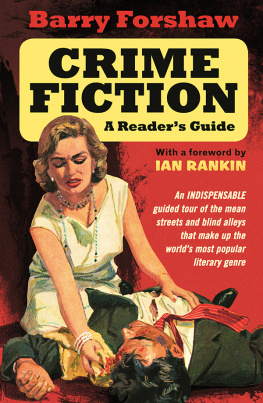
CRIME IN ENGLAND, 18801945
This book is an ambitious attempt to map the main changes in the criminal justice system in the Victorian period through to the twentieth century. Chapters include an examination of the growth and experience of imprisonment, policing, and probation services; the recording of crime in official statistics and in public memory; the possibilities of research created by new electronic and online sources; an exploration of time, space and place, on crime; and the growth of internationalisation and science-led approach of crime control methods in this period.
Unusually, the book presents these issues in a way which illustrates the sources of data that informs modern crime history and discusses how criminologists and historians produce theories of crime history. Consequently, there are a series of interesting and lively debates of a thematic nature which will engage historians, criminologists, and research methods specialists, as well as the undergraduates and school students who, like the author, are fascinated by crime history.
Barry Godfrey is Professor of Social Justice at Liverpool University. He has twenty years of experience in researching comparative criminology, particularly international crime history; desistance studies; and longitudinal studies of offending.
History of Crime in the UK and Ireland
Series editor: Professor Barry Godfrey
Rarely do we get the opportunity to study criminal history across the British Isles, or across such a long period. History of Crime in the UK and Ireland is a series which provides an opportunity to contrast experiences in various geographical regions and determine how these situations changed with slow evolution or dramatic speed and with what results. It brings together data, thought, opinion, and new theories from an established group of scholars that draw upon a wide range of existing and new research. Using case studies, examples from contemporary media, biographical life studies, thoughts, and ideas on new historical methods, the authors construct lively debates on crime and the law, policing, prosecution, and punishment. Together, this series of books builds a rich but accessible history of crime and its control in the British Isles.
1 Crime in England, 16881815
David J. Cox
2 Crime in England, 18801945
Barry Godfrey
CRIME IN ENGLAND, 18801945
The rough and the criminal, the policed and the incarcerated
Barry Godfrey
First published 2014
by Routledge
2 Park Square, Milton Park, Abingdon, Oxon OX14 4RN
and by Routledge
711 Third Avenue, New York, NY 10017
Routledge is an imprint of the Taylor & Francis Group, an informa business
2014 Barry S. Godfrey
The right of Barry S. Godfrey to be identified as author of this work has been asserted in accordance with the Copyright, Designs and Patent Act 1988.
All rights reserved. No part of this book may be reprinted or reproduced or utilized in any form or by any electronic, mechanical, or other means, now known or hereafter invented, including photocopying and recording, or in any information storage or retrieval system, without permission in writing from the publishers.
Trademark notice: Product or corporate names may be trademarks or registered trademarks, and are used only for identification and explanation without intent to infringe.
British Library Cataloguing in Publication Data
A catalogue record for this book is available from the British Library
Library of Congress Cataloging-in-Publication Data
Godfrey, Barry S.
Crime in England 18801945 / Barry Godfrey.
pages cm. (History of crime in the UK and Ireland)
Includes bibliographical references.
1. Crime Great Britain History 19th century. 2. Crime Great Britain History 20th century. 3. Criminal justice, Administration of Great Britain History. 4. Police Great Britain History. I. Title.
HV6943.G63 2014
364.10942'09041 dc23 2013012462
ISBN: 978-1-84392-948-2 (hbk)
ISBN: 978-1-84392-947-5 (pbk)
ISBN: 978-1-3158862-9-9 (ebk)
Typeset in Bembo
by Apex CoVantage, LLC
For Jane and Alex
CONTENTS
Numbers of police officers employed in England and Wales, 18571939
Total number of prosecutions, 18561940 (in thousands)
Indictable and non-indictable crime, 18701913
Category 1: offences against the person
Category 2: offences against property involving violence
Category 3: offences against property not involving violence
Category 5: forgery and currency offences
Category 4: malicious offences against property
Category 6: miscellaneous offences (game laws, perjury, riots)
Prosecutions for serious violent offences in Category 1, England and Wales, 18701914
Prosecutions for drunkenness and assaults, England and Wales, 18561938
Prosecutions for assaults, England and Wales, per 10,000 persons, 18711931
Prosecutions for assaults on police officers, England and Wales, per 10,000 persons, 18711931
Prosecutions for drunkenness, England and Wales, per 10,000 persons, 18711931
Prosecutions for criminal damage, England and Wales, 18711931
Prosecutions for drunkenness and motoring related offences, Crewe, 18801940
Regulatory offences, Crewe, 18801940
Rate of growth (percentage), gross domestic product, 18801940
Annual gross domestic product (m) and prosecutions for drunkenness and assault, 18801940
Motoring offences, England and Wales, 19221939
Prosecutions for alcohol and motoring related offences, Canada, 18901939
Prosecutions for alcohol and motoring related offences, Australia, 18901939
Police staffing numbers and police budgets (in hundreds of s)
Recidivists convicted, England and Wales, 18801938
Number of convictions per recidivist, England and Wales, 18801938
County local prison (CLP) and convict prison committals 18561945
Summary offences and prison populations, England and Wales, 18571937
Proportion of sentencing disposal (summary offences), England and Wales, 18571938
Proportion of sentencing disposal (indictable offences), England and Wales, 18571938
Children housed in industrial schools, reform schools, and Borstal, England and Wales, 18911941
This is a good opportunity to take stock. I see this book as an opportunity to revisit some issues that I have tried to examine in the past and to advance some new ideas which may stimulate discussion amongst my colleagues, amongst under- and postgraduates, and in the wider academic community (by which I mean all those people that work in universities, or in libraries, or those who just have a healthy interest in the history of crime). The hope is that this is seen as an ambitious and wide-ranging book. It will take us from case studies of individual prisoners rotting in Her Majestys Convict Prisons in the 1880s to the middle-class citizen stopped for speeding in the 1930s; it will take us from the lived experiences of normal working-class residents in English and Welsh cities, to cowboys in Arizona, and the forbidding fortress of Alcatraz. We sift through stories, examples, statistics, and theories and the evidence for them, only to have each source of information questioned, critiqued, and interrogated before moving on to the next source. Our journey explores the written documents created by the criminal justice system itself, the fragmentary evidence of crime and victimisation from oral histories, and the new digital media that is just a mouse-click away. Moreover, we follow the dark tourists to the places where crime and particularly punishment are remembered, commemorated, and commoditised for visitors looking for information and entertainment.




